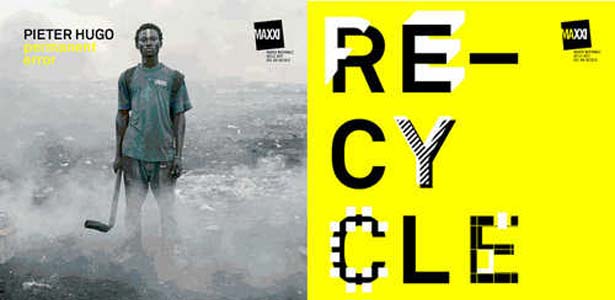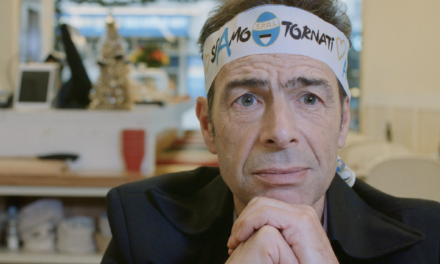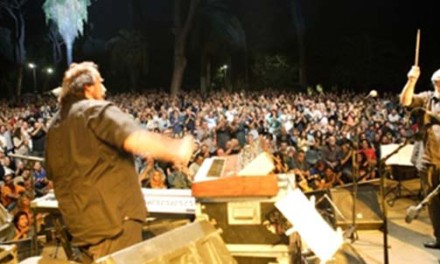From 1 December 2011 to 29 April 2012 will take place at the MAXXI museum in Rome “RE-CYCLE“
Recycling as “one of the greatest generators of creative innovation”.
This is RE-CYCLE. Strategies for Architecture, City and Planet, the major exhibition that MAXXI Architettura, directed by Margherita Guccione, is devoting to the architecture of the third millennium and its most innovative practitioners. RE-CYCLE, curated by Pippo Ciorra, senior curator at MAXXI Architettura, together with the architecture museum’s curatorial staff (Elena Motisi, Alexandra Kaspar, Alessio Rosati) and an international scientific committee composed of Reinier de Graaf, Sara Marini, Mosè Ricci, Jean-Philippe Vassal and Paola Viganò, will be open to the public from 1 December 2011 to 29 April 2012 (catalogue published by Electa).
On show at MAXXI (in the external piazza, on the ground floor and in the first floor galleries) are over 80 works including drawings, models as well as architectural, planning and landscape design projects placed in continuous dialogue with the works of artists, designers and videomakers, with broad contaminations with musical and TV productions.
The exhibition expands outside the museum with two site-specific installations: Maloca by the Brazilian designers Fernando and Humberto Campana (on Thursday 1st December they will meet the public at the auditorium in the MAXXI for MAXXINWEB, from 9 pm, free entry) and work shop roma, an installation produced out of recycled materials by the German collective raumlaborberlin, created on site over the days preceding the inauguration.
The Carlo Scarpa Room on the ground floor instead hosts the photographic exhibition Permanent Error by Pieter Hugo (Johannesburg, 1976, winner of the World Press Photo 2006): 27 shots showing through disturbing portraits an immense, apocalyptical high-tech dump in Ghana.
THE EXHIBITION
The exhibition features both very recent projects, produced in “real time” by the new environmental sensitivity pervading the work of the designers, and more consolidated and even historicised examples, testifying that recycling is a practice deeply-rooted within the artistic and design professions.
Among the most well-known and spectacular “pieces” on show are: the original model of the High Line in New York; a drawing by Peter Eisenman for Cannaregio in Venice, those of Superstudio for the raising of the Colosseum, the images of the Palais de Tokyo in Paris by Lacaton & Vassal and of the Wagristoratore by Pietro Portaluppi in Val Formazza (Verbania), the model of the Trento Tunnel, turned into a museum by Elisabetta Terragni and the images of the project by James Corner transforming a landfill site into a park on Staten Island, NY; the videos with the “recycling” of works by Frank O. Gehry and Venturi, Scott Brown and Associates.
Among the most “creative” recycling, Music on Bones presenting the records of Jimi Hendrix and other rock stars pressed onto X-ray plates of a fractured cranium or a tibia in Cold War Russia; an extraordinary MAXXIblob of 1,500 hours that will be screened continuously throughout the duration of the exhibition, the videos of Zbigniew Rybczynski, Nina Fischer & Maroan el Sani, Song Dong and many others.
THE SITE-SPECIFIC INSTALLATIONS
In the museum’s external space, two site-specific projects will provide a “live” demonstration of the potential of recycling.
Maloca by Fernando and Humberto Campana, curated by Domitilla Dardi, is a large-scale installation in wood and synthetic raffia, based on a Brazilian tradition revisited in a contemporary key and located so as to cover the museum entrance. The objective is that of welcoming the visitors within an “intermediate” space recalling the communal structures of the Amazon Indians that at the same time dialogues with the fluid and ultra-modern forms of Zaha Hadid.
Close to the Via Masaccio entrance instead, the collective raumlaborberlin installed work shop roma using recycled materials and discarded furniture. The installation has been built by the architects and a group of students during a workshop coordinated by MAXXI’s Education Department and in collaboration with MIUR. During the period of the exhibition, the installation will host numerous workshops and educational activities. All the phases of the workshop are on line in the blog with all the comments from the students and the public and a lot of pictures too.
PIETER HUGO – PERMANENT ERROR
The exhibition Permanent Error, curated by Francesca Fabiani, brings together 27 shots by the South African Pieter Hugo that document an immense dump in Ghana composed of electronic waste from all over the Western world. This expanse, cloaked in toxic fumes and traversed by spectral figures, represents the result of recycling as an end in itself, to the total detriment of the local population.
Pieter Hugo presents us with an atmosphere somewhere between the bucolic and the infernal, in which the figures wander around bonfires and piles of electronic scrap, while cows and oxen placidly graze amidst the toxic miasmas from the ground. From columns of thick smoke emerge, ghost-like, the portraits of Mohammed Musam, Abdulai Yahaya, Ibrahim Sulley and many others.
RE-CYCLE has been realised with the support of ARCUS.
info and reservations tel. +39 06 32810
www.fondazionemaxxi.it
OPENING HOURS
Tuesday-Wednesday-Thursday-Friday-Sunday 11.00/19.00 | Saturday 11:00/22:00
closed Mondays, the ticket office closes an hour before the museum
TICKETS: adults €11 | concessions €8
MAXXI National Museum of XXI Century Arts
via Guido Reni, 4/A , 00196 ROME
View Map
Dal 1 Dicembre 2011 al 29 Aprile 2012 si terrà al MAXXI di Roma la mostra “RE-CYCLE“: la pratica del riciclo come “uno dei massimi generatori di innovazione creativa”.
“RE-CYCLE. Strategie per l’architettura, la città e il pianeta” è la grande mostra che il MAXXI Architettura, diretto da Margherita Guccione, dedica all’architettura del terzo millennio e ai suoi autori più innovativi. Curata da Pippo Ciorra, senior curator del MAXXI Architettura, insieme con l’intero staff curatoriale del museo di architettura (Elena Motisi, Alexandra Kaspar, Alessio Rosati) e con un comitato scientifico internazionale composto da Reinier de Graaf, Sara Marini, Mosè Ricci, Jean-Philippe Vassal e Paola Viganò, RE-CYCLE sarà aperta al pubblico dal 1° Dicembre 2011 al 29 Aprile 2012.
In mostra al MAXXI (nella piazza esterna, al piano terra e nelle gallerie del primo piano) ci sono oltre 80 opere tra disegni, modelli, progetti di architettura, urbanistica e paesaggio, in dialogo continuo con opere di artisti, designer, video maker, con ampi sconfinamenti verso produzioni musicali e televisive.
La mostra si espande all’esterno del museo con due installazioni site specific: il progetto Maloca dei designer brasiliani Fernando e Humberto Campana (che giovedì 1 Dicembre incontreranno il pubblico in occasione di MAXXINWEB, ore 21, ingresso libero) e il padiglione officina roma in materiale riciclato del collettivo tedesco raumlaborberlin (on line sul blog www.recyclelab.it), entrambi realizzati “in diretta” nei giorni precedenti l’inaugurazione.
Nella sala Carlo Scarpa, al piano terra, la mostra fotografica Permanent Error di Pieter Hugo (Johannesburg 1976, vincitore del World Press Photo 2006): 27 scatti che raccontano attraverso ritratti inquietanti un’apocalittica, enorme discarica tecnologica in Ghana.
LA MOSTRA
L’esposizione comprende sia progetti recentissimi, prodotti in “tempo reale” dalla nuova sensibilità ambientale che pervade il lavoro dei progettisti, sia esempi più consolidati o perfino storici, a testimoniare che il riciclo è una pratica connaturata al mestiere del progettista e dell’artista.
Tra i “pezzi” più noti e spettacolari esposti in mostra si segnalano: il plastico originale del progetto della High Line di New York, il disegno di Peter Eisenman per Cannaregio a Venezia, quelli di Superstudio sulla sopraelevazione del Colosseo, le immagini del Palais de Tokyo, a Parigi, di Lacaton & Vassal e del Wagristoratore di Pietro Portaluppi in Val Formazza (Verbania), il modello dei Tunnel di Trento, trasformato in museo da Elisabetta Terragni e le foto del progetto di James Corner che trasforma una discarica in parco, a Staten Island, NY, i video con i riciclaggi di opere dismesse di Frank O. Gehry e Venturi, Scott Brown and Associates.
Tra i ricicli “più creativi”, la sezione Music on bones propone i dischi di Jimi Hendrix e altre rockstar incisi sulla lastra di un cranio fatturato o di una tibia nella Russia della Guerra Fredda; uno straordinario MAXXIblob di 1500 ore che verrà proiettato per tutta la durata della mostra; i video di Zbigniew Rybczynski, Nina Fischer & Maroan el Sani, Song Dong e molti altri; la parete in bottiglie riciclate in PET (polietilenetereftalato) con cui Miniwiz ha interamente rivestito il padiglione EcoARK a Taipei.
LE INSTALLAZIONI SITE SPECIFIC
Nello spazio esterno del museo, due progetti site specific mostrano in “diretta” le potenzialità del riciclo.
Maloca dei Fernando e Humberto Campana, a cura di Domitilla Dardi, è una grande installazione di legno e rafia sintetica, secondo una tradizione brasiliana ripensata in forme contemporanee, collocata a coprire l’ingresso del museo. L’obiettivo è accogliere i visitatori in uno spazio “intermedio” memore delle strutture comunitarie degli indios amazzonici e allo stesso tempo dialogante con le forme fluide e modernissime di Zaha Hadid.
Vicino all’ingresso di via Masaccio, invece, il collettivo raumlaborberlin realizza il padiglione officina roma con materiali edilizi di recupero e arredi di scarto, costruito dagli stessi architetti durante un workshop con gli studenti coordinato dal Dipartimento Educazione del MAXXI, in collaborazione col MIUR. Durante il periodo di mostra, il padiglione ospiterà laboratori e iniziative educative e di intrattenimento. Tutte le fasi del workshop sono on line sul blog www.recyclelab.it, con i commenti degli studenti e del pubblico e tante immagini.
PIETER HUGO – PERMANET ERROR
La mostra Permanent Error, curata da Francesca Fabiani, raccoglie 27 scatti del sudafricano Pieter Hugo che documentano un’immensa discarica in Ghana costituita da dispositivi elettronici fuori uso provenienti dal mondo occidentale. Questa distesa, avvolta da fumi tossici e attraversata da figure spettrali, rappresenta la deriva di un’azione di riciclo fine a se stessa, a totale discapito della popolazione beneficiaria.
Pieter Hugo ci restituisce un’atmosfera tra il bucolico e l’infernale, in cui le figure si aggirano tra falò e cumuli di rottami informatici mentre vacche e buoi pascolano placidi tra i miasmi tossici del terreno. Da colonne di fumo denso emergono, come apparizioni, i ritratti di Mohammed Musam, Abdulai Yahaya, Ibrahim Sulley e molti altri.
RE-CYCLE è realizzata con il sostegno di ARCUS.
info e prenotazioni tel. +39 06 32810
www.fondazionemaxxi.it
ORARI martedì-mercoledì-giovedì-venerdì-domenica 11:00/19:00 | sabato 11:00/22:00
chiuso lunedì, la biglietteria chiude un’ora prima del museo
BIGLIETTI : intero €11 | ridotto €8
MAXXI Museo nazionale delle arti del XXI secolo
Via Guido Reni, 4/A , 00196 ROMA
Guarda la Mappa





